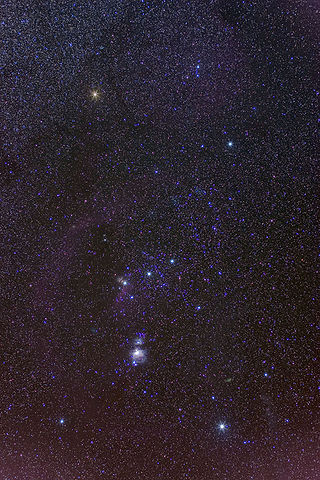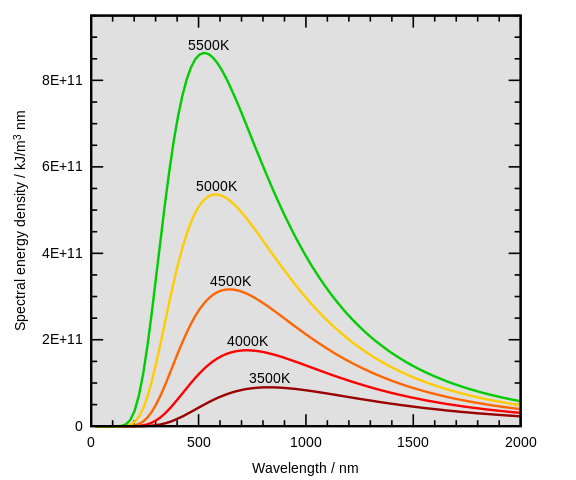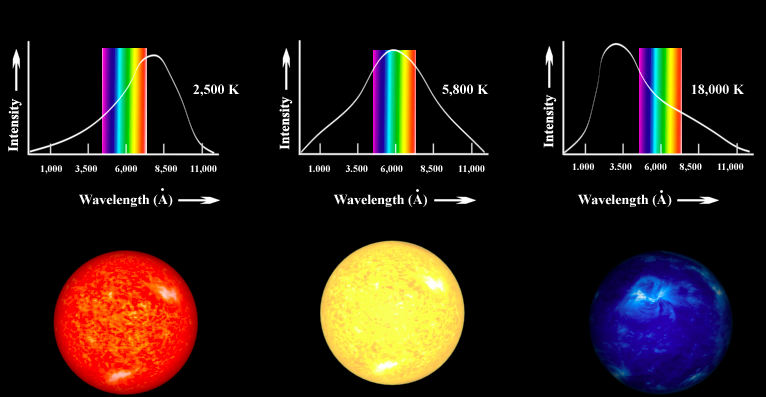Astronomers often refer to the colour of a star, which seems a bit odd because we mostly see stars as white twinkly objects. However, even with the naked eye, we can look closely at certain stars and detect a hint of colour – just look at this image of the Orion constellation. As we view him, the left shoulder has a red coloured star, while the right shoulder and right foot appear to be blue.
image: Orion 3008 huge.jpg, Wikipedia
Now click on the image to see the same view at much higher resolution. In the hi-res photo, look at the stars in the background. They’re not all white!
What can the colour of a star tell us?
The apparent colour of the star tells us something about its temperature. The hotter the object, the shorter the peak wavelength emitted by the star, as shown in the graph below. This relationship is called Wien’s Law.
Although this relationship is not provided in the CfE Higher relationship sheet, there is potential for a graph question relating to Wien’s Law.
image: Wien’s Law, Wikipedia
It might be easier to see the emitted wavelengths projected against the visible part of the electromagnetic spectrum. Here, the wavelengths are given in an alternative unit – Ångstroms (10 Å = 1 nm). Our Sun is a typical yellow star, so its emission would be represented by the middle star in this image.
image courtesy of kstars, kde.org – colour is exaggerated
Advanced Higher only:
The colour of a star also tells us something about the expected behaviour of a star, it’s lifetime, and destiny. This is achieved by plotting the stars on a Hertzsprung-Russell diagram. More about HR diagrams here.
Test your understanding of the HR diagram.
In case you were wondering, we get red stars, orange stars, yellow stars, and blue stars. But not green stars.



